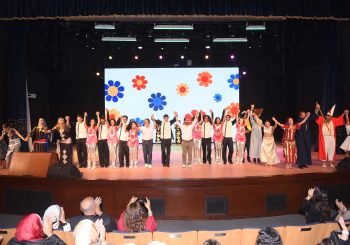Driving through a sea of billboards day after day has just become a staple part of daily life in Cairo. Giant billboards, endless celebrity-driven television advertisements and hours on end of social media pop ups have slowly taken over our lives in both direct and indirect manners.
This bombardment of advertising brings in to question a number of things: has advertising in Egypt gotten to be too much? Do these advertisements work? Do advertisers, clients and consumers even see eye to eye/work towards the same goal? How exactly has Egypt’s advertising scene evolved over the years into what it is now?
In order to attempt to answer any of these questions, we need to begin by diving deeper into how exactly advertising has evolved and shaped itself in recent history, as well as take various cultural, social and psychological factors into consideration.
Advertising then
As is the case with the rest of the world, advertising has always played some sort of a role in Egyptian society – whether in the form of print, radio or TV, although it has surely risen in importance and appearance in recent years as a result of a rise in consumerism.
According to a piece analyzing Egypt through its advertisements on Ahram Online, TV advertisements in Egypt used to take up about 15 minutes of people’s time in the 1990’s, whereas these days – most specifically during Ramadan (akin to Super Bowl advertisements) – they’ve gone up to consume up to 45 minutes of people’s time.
To date, television still has the highest penetration rates in Egypt and, according to a report published on Oxford Business Group, it is a medium that attracts 95 percent of the population on a weekly basis. With the rise of TV ads during the mid-20th century however, came a rise in trying to apply more entertaining methods of advertising in order to stand out and attract consumers.
The 1970’s saw a rise in the use of consumer insights and humor as key selling points in shaping advertisements as a form of entertainment. The innovation in the use of culturally relevant humor evolved into the creation, use and adaptation of more and more advertisement jingles during the 1980’s, such as the popular Gersy Chocolate jingle that most of the Egyptian population is most likely to be familiar with.

During the 1990’s, Egyptian advertisements seemed to spread even further and the use of billboards became more popular, slowly building up to the sea of billboards we see as we drive across the 6th of October Bridge today. According to the same piece by Ahram Online, in addition to added satire, humor and dramatic plot, “there was a major reliance on beauty and feminine appeal, especially in the 1990s. Comedy and accompanying songs were elements of strength in Egyptian ads, and these have become bolder over the years.”
When TV ads rose to popularity in the mid-to-late 20th century, there were only two major advertising agencies in Egypt that took over the field at the time: Tarek Nour Advertising (which still exists today), and Senior Advertising.
Insights and trends
If one works in the advertising field, the word ‘insights’ is as familiar as hearing your daily dose of ‘good morning’. Building your ad based on relevant and ‘trendy’ consumer insights is everything.
In the advertising world, making your ad culturally and socially relevant is key in attracting consumers and grabbing your audience’s attention. This also plays a role in why big brands opt for using local celebrities in their ads – the ones who the general population are familiar with and love (or love to hate). An example of this was the use of actor Hassan Abdin in a series of Schweppes ads back in the 1980’s, and more recently the use of actor Mohamed Ramadan in Etisalat ads and a number of other brands as well.
As competition in the market (and field) has grown to an all-time high, advertising agencies constantly try to find innovative ways in applying current trends and consumer insights to their clients’ ads. A clever and successful example of the use of relevant insights is EG Bank’s recent 2017 Ramadan ads targeting youth, in which they tackle the idea that usually the younger people of the family are swept to the side as they are not seen as responsible by showcasing this through relatable family situations – using a clever play on words, their message ultimately reads that ‘even though you may not be taken seriously or be seen as a responsible young adult amongst your family, EG Bank takes you seriously and sees you as responsible and will therefore open a bank account for you’.

More recently, Pepsi made use of the current rap and trap trend in Egypt’s music scene by featuring local (and popular) rappers Abyusif and Marwan Pablo in their latest ad promoting their new line of flavored Pepsi.
It is important to note, however, that advertising nowadays has gotten a lot more complex than simply creating an entertaining and culturally relevant TV ad.
With the rise in digital advertising and the new tools that are now available through the online world, advertising is about how intelligently you can reach your consumer whilst still staying ‘fresh and creative’. In short, advertisers now need to flex both their creative and technical muscles in an attempt to find ways to outsmart each other.
The growth of digital advertising and the role of globalization
Although, generally speaking, Egypt’s approach to advertising is still slightly outdated when compared to the rest of the world, mainly due to the fact that we still need to cater to what would be most relevant to and accepted by our society, the rise in digital advertising has undoubtedly pushed advertisers to explore beyond their limitations, and make use of a rising digital culture.
According to Oxford Business Group’s report on advertising expenditures in Egypt, “around half of Egypt’s population of 90m is under the age of 29, which means a massive market of technologically literate consumers.”
With that in mind, it is important for advertising agencies these days to not only come up with ‘creative content’, but to also stay up to date with market trends and tools when it comes to the role digital tools and techniques now play in advertising.

Thanks to globalization and the online world facilitating exposure to international markets, it has become exceedingly important, as well as easier, to try to ‘stay on par with, if not ahead of, the game’ and come up with innovative ways to utilize this relatively new digital medium.
Although not as widely explored as in some other parts of the world, the possibilities of using a digital medium these days seem endless, and more and more local brands have been attempting to optimize their advertising through digital marketing.
Advertising now
Even with the added role of the digital medium, it seems as though TV ads and video production are still the leading advertising options for clients and Egypt’s general population. Creatively made videos that seem to have a well-thought out plot and concept behind them are what seem to gain the most ‘engagement’ from audiences – whether that engagement be from TV or social media circulation.

These days, advertising agencies have grown in number and there are different (and more) advertising giants leading the field than the days of Tarek Nour’s reign. Of such agencies are the multinational award-winning FP7 Cairo, part of McCann Worldgroup and the local award-winning agencies Good People and Kijamii, part of the GP&K Network.
It seems as though celebrity and concept-driven video advertisements still play a large role in Egypt’s advertising today, with the antes having been raised when it comes to video production expenditure. Advertisement production in Egypt seems to be, at times, taken more seriously than film and TV production with big brands allocating even bigger budgets towards their ads – especially during Ramadan.
That being said, advertising has undoubtedly come a long way – it is just a matter of how the world changes around us that will determine how and where we will go from here.







Comments (3)
[…] readers or listeners) to take action, then advertising can relate back to as far as 2000 BC, when Egyptians invented the 1st primitive form of outdoor advertisement when they carved public messages on stelae (stone […]
[…] [READ MORE…] […]